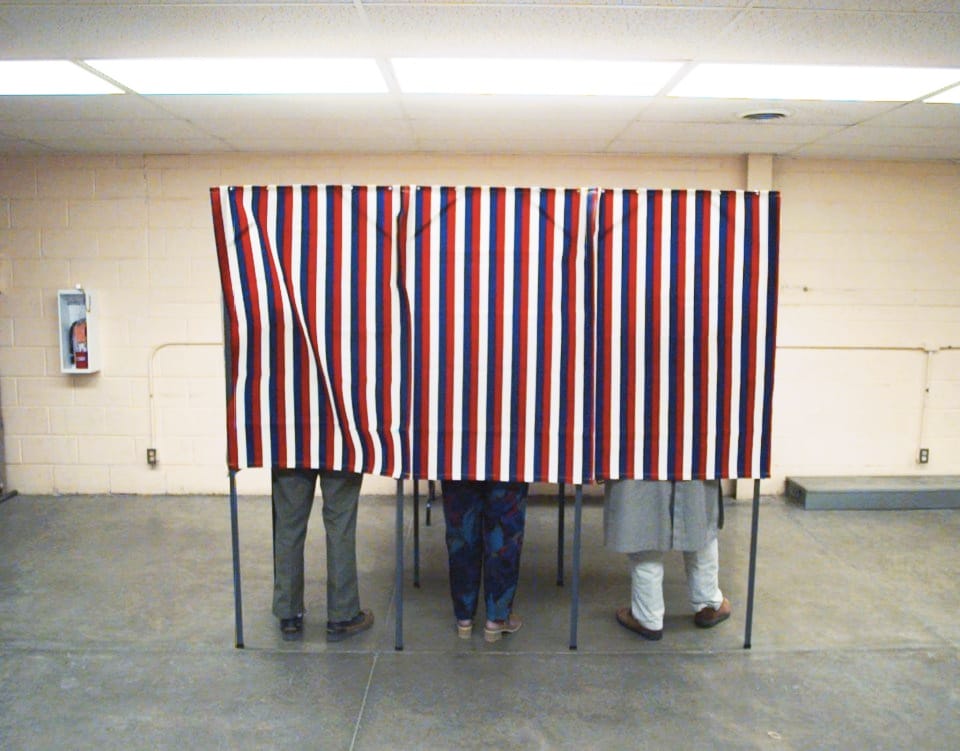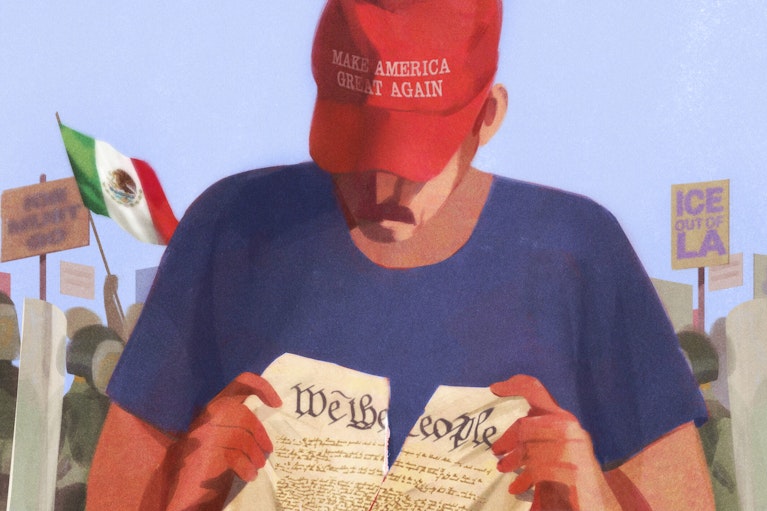Dambisa Moyo is an economist. Her new book is “Edge of Chaos: Why Democracy Is Failing to Deliver Economic Growth and How to Fix It.”
America’s democracy is at a breaking point. Voters are less engaged, and signs of institutional decay point to a political system increasingly unable to tackle the economic challenges we face.
Since the 1970s, voter participation in the United States has been around only 50 to 60 percent. Voter participation from households earning $30,000 or less has been even lower, at about 30 percent. This is a far cry from the goal of representative democracy based on “one person, one vote.”
Also damaging, money buys more political power than ever before, particularly in the wake of the U.S. Supreme Court’s Citizens United decision. The cash spent lobbying Congress has more than doubled since 2000, from $1.57 billion to $3.37 billion in 2017. In 2016, an estimated 50 percent of all financial contributions to political campaigns came from just 158 families, reflecting a close interplay between money and political influence.
According to a 2017 Pew survey, more than 80 percent of Americans don’t trust the federal government to regularly “do what is right.” Meanwhile, Freedom House has reported that for the past two years, America has seen its freedoms and civil liberties decline sharply. The Economist Intelligence Unit downgraded the United States from a “full democracy” to a “flawed democracy” in 2017.
This comes at precisely a point when the U.S. economy faces an unprecedented confluence of long-term headwinds to economic growth: unsustainable debt, worsening inequality, underemployment on the back of tech advances, dwindling natural resources and mounting costs of an aging population. The short-termism embedded in the current political system leaves politicians ill-equipped to deal with the scale and urgency of these headwinds.
Democracy should aim to have as many people as possible vote and to provide voters with quality and objective information so they can elect the best possible candidates to office. As such, the U.S. democratic system urgently needs an overhaul that reengages voters and strengthens its politicians.
Steps to improve the system:
1. Mandatory voting
Mandatory voting would guarantee greater voter participation, making political leaders accountable to a wider electoral base. Citizens should be required to vote or else face a penalty, such as a fine. This policy is already in place in established and longstanding democracies such as Belgium, Australia and Luxembourg, where voter turnout has consistently remained over 80 percent and often over 90 percent.
Mandatory voting flies in the face of American tradition, in particular the First Amendment, which includes the freedom to not speak, therefore enshrining the right to not vote. But compulsory voting would avoid a more corruptible system in which politicians frame policy around the interests of a narrow voter base.
2. A voter test
Introducing a system to test voter knowledge would embed minimum standards that would lead to higher-quality decision making by the electorate. All voters should be tested on their knowledge of their rights and responsibilities, the functioning of government through the executive, legislative and judiciary branches, as well as basic knowledge of the issues on the ballot. This knowledge and the ability to pass the test must be accessible to all regardless of background or education — in much the same way that all immigrants must pass the same civics test whatever their background, race or economic status.
Mandatory voting and a voter test need not be contradictory. For example, a country could operate a system where those who have not passed the test have a single vote, while those who have passed it gain a vote with a greater weight. Importantly, there should be no cap on how many attempts people get to pass the voter test.
3. Weighted voting
The practice of weighted voting takes the concept of a “qualified” voter further, increasing the weight of the vote based on engagement. Weighted voting allocates more or less weight to individuals’ votes based on a measure of understanding of the key issues at stake; it should not simply reflect social standing or IQ. This approach would likely work better in a referendum-style election on a specific issue rather than on a broad general election.
An extreme version of weighted voting would increase the weight of votes based on knowledge. For example, the votes of doctors and nurses could count more on matters of health policy, teachers’ votes could weigh more on education issues, and so on; average citizens that show some understanding of the issues on the ballot could also gain a more heavily weighted vote. It would be essential to have transparency over how people acquire a higher weighted vote and to ensure equal opportunity to obtain it.
Weighted voting should be designed to help society and should not pander to narrow interest groups or risk conflicts of interest. To avoid this, a vote about a union-friendly law for teachers, for example, should not restrict weighted votes to only teachers. A test should allow interested parties, such as parents who show engagement in key education issues, to gain a weighted vote.
At the federal level, a weighted vote based on age is also worth considering. For example, younger voters could carry more weight as they will likely face the consequences of government policy for a longer future, or at least on certain issues.
4. Longer term limits
A more fulsome overhaul to the democratic process should also impact politicians, specifically by extending term limits. Extending political terms beyond two years in the U.S. House of Representatives to five or even seven years would better match the length of business cycles. The average length of the business cycle since World War II is just under five years — but they can last for as many as 10 years. Policymakers would be incentivized to implement policies that deliver growth over five to seven years rather than simply being driven by annual budgets and the need to cater to voters every two years.
The U.S. Senate, with six-year terms, is closer to this ideal, but the House is far from it. In the context of the U.S. presidency, terms should be extended to six years, closing matching the average length of business cycles.
Of course, limiting the number of terms of officials is meant to help fight complacency, corruption and the reduced accountability that can set in when a lawmaker holds office for several decades. And extending political terms comes with the risk of being stuck with a bad policymaker for a longer term. However, on balance, the combination of better voter engagement and knowledge as well as extending terms will outweigh this potential downside.
Much is at stake. The size and complexity of the manifold economic challenges the U.S. economy faces warrant a democratic political system that adopts a longer-term approach more firmly rooted in the active engagement of its citizens. American democracy must innovate — or risk even more dire political and economic decline.
This was produced by The WorldPost, a partnership of the Berggruen Institute and The Washington Post.





